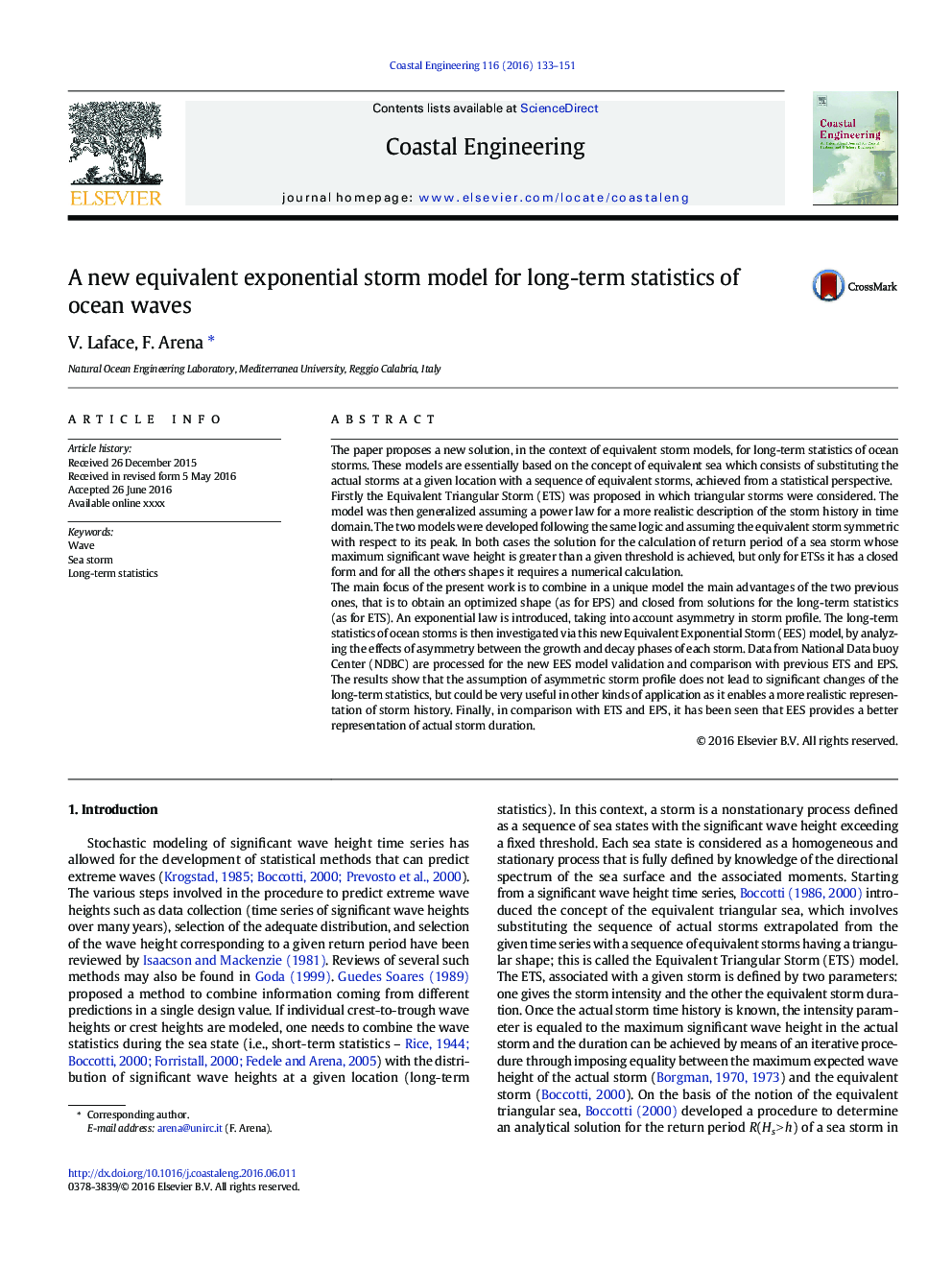| Article ID | Journal | Published Year | Pages | File Type |
|---|---|---|---|---|
| 8059656 | Coastal Engineering | 2016 | 19 Pages |
Abstract
The main focus of the present work is to combine in a unique model the main advantages of the two previous ones, that is to obtain an optimized shape (as for EPS) and closed from solutions for the long-term statistics (as for ETS). An exponential law is introduced, taking into account asymmetry in storm profile. The long-term statistics of ocean storms is then investigated via this new Equivalent Exponential Storm (EES) model, by analyzing the effects of asymmetry between the growth and decay phases of each storm. Data from National Data buoy Center (NDBC) are processed for the new EES model validation and comparison with previous ETS and EPS. The results show that the assumption of asymmetric storm profile does not lead to significant changes of the long-term statistics, but could be very useful in other kinds of application as it enables a more realistic representation of storm history. Finally, in comparison with ETS and EPS, it has been seen that EES provides a better representation of actual storm duration.
Keywords
Related Topics
Physical Sciences and Engineering
Engineering
Ocean Engineering
Authors
V. Laface, F. Arena,
